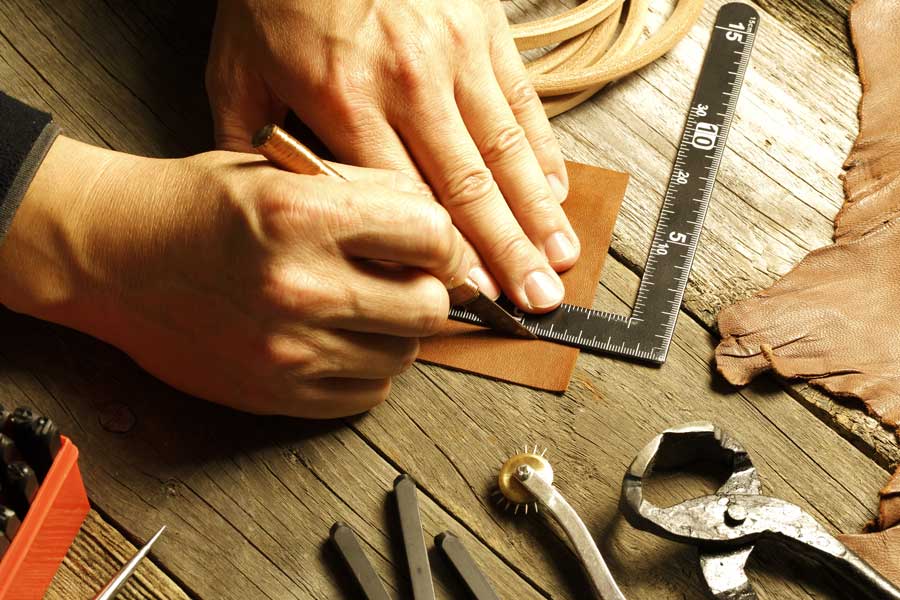By Jackie Adamany
 How is 2014 shaping up for the business of arts and crafts? How do artists get noticed in 2014? Good news is on the horizon! “Handmade is going to continue to grow in 2014,” according to Jonathan Peacock, Zibbet’s CEO. That is the same impression heard from show organizers and producers across the country. The consumer is ready to buy, but they are more focused and more in tune with what is on trend and what is well crafted.
How is 2014 shaping up for the business of arts and crafts? How do artists get noticed in 2014? Good news is on the horizon! “Handmade is going to continue to grow in 2014,” according to Jonathan Peacock, Zibbet’s CEO. That is the same impression heard from show organizers and producers across the country. The consumer is ready to buy, but they are more focused and more in tune with what is on trend and what is well crafted.
Raise Your Hands High
So what’s an artist to do in 2014 to get noticed? There are key strategies artists will have to implement for 2014 to stand out from the crowd and to succeed. Michelle Karol, NY NOW HANDMADE collection sales manager, explains, “Our research indicates that finding ‘new’ product is the primary reason for attending a trade show, such as NY NOW. In line with this, artists must continue to offer new and exciting products to keep their existing lines fresh and exciting.”
According to Marie Knight, AmericasMart managing director of tradeshows in Atlanta, Georgia, “Our Handmade Designs and Emerging Artists collections, as well as our Global Designs category, offer exhibitors an opportunity to showcase their lines in a designated area. This makes it even easier for buyers who are looking to source those products to find a broad array of options easily.” Knight firmly believes that a tradeshow promotion team has an obligation to the exhibitors to showcase them in the most comprehensive, logical, and easy-to-find manner. Artisans and other purveyors of handmade goods should have their talents and unique skills highlighted and explained by their tradeshow location. “AmericasMart is fortunate to be an incubator for many artists who create their own products and want to grow their businesses,” Knight emphasizes.
Kelly Rand, the trend watcher of Handmade Modern and the arts editor for DCist, observes how innovative artists will be the ones who succeed: “Within the handmade community, we’re seeing a lot of hubbub about Etsy making room for designers to sell their wares on the Etsy site. While some feel this is against the Etsy ‘ethos,’ I see this as a smart move allowing for artists and designers to continue to innovate and push the boundaries of their work and make more time to produce new works than old.” In other words, rather than only permitting a single artist to be responsible for a single creation, Etsy will now be permitting “collectives of craftsmen” to make items for sale or allowing designers to have their creations made by hands other than their own.

According to Karol, “It is important for artists to maintain a continuous presence at market in order to connect with existing and new buyers. While an online presence is extremely important for broad visibility, buyers want to see and touch handmade products and meet the artists in person.”
Rand agrees, saying, “Keep putting yourself out into the world. Try a new show or test out a new audience with a new product. Try a new social media tool that you’ve been putting off learning. The more you put yourself and your work out into the world, the more opportunities and exposure you open yourself up to.”
Handmade Gets Applause
Show promoters and marketers are responding to this handmade movement. Karol shares what NY NOW is doing for 2014: “Our main goal is to make sure that buyers are fully informed and able to find new products before, during, and after market. Our new website, www.NYNOW365.com, allows retailers to find, collect, and share product images that are reflective of new trends. This winter, we also have partnered with a well-known forecaster to showcase 10 trends that will influence home and lifestyle products in 2014 and beyond. This information will be presented in an onsite seminar, and previewed through our blog and e-newsletter. Onsite at NY NOW, we continue to highlight exciting, trend-driven product within special displays, such as SustainAbility: design for a better world and Made in USA.”
 Recently Zibbet (the online selling portal) launched an initiative in support of the buying and selling of truly handmade products. Their website (www.iPledgeHandmade.com) encourages handmade artisans, crafters, and the buying public to “take the pledge” in support of individual handmade, fine art, vintage, and supply sellers. Jonathan Peacock explains, “We started the campaign about a week after Etsy made their announcement to allow sellers to use manufacturers and hire staff. Basically, that goes against what ‘handmade’ is all about. Our goal is to bring greater awareness to handmade and the time, effort, and love that is put into creating and fashioning every item.”
Recently Zibbet (the online selling portal) launched an initiative in support of the buying and selling of truly handmade products. Their website (www.iPledgeHandmade.com) encourages handmade artisans, crafters, and the buying public to “take the pledge” in support of individual handmade, fine art, vintage, and supply sellers. Jonathan Peacock explains, “We started the campaign about a week after Etsy made their announcement to allow sellers to use manufacturers and hire staff. Basically, that goes against what ‘handmade’ is all about. Our goal is to bring greater awareness to handmade and the time, effort, and love that is put into creating and fashioning every item.”
Innovative and exciting seem to be the newest buzzwords for 2014. Keeping innovative means pushing the boundaries and adding fresh products to your mix that reflect what is currently trending.
2014 Survival Guide
• Social Responsibility. Think handmade, organic, natural, sustainable, fair trade, and eco-friendly. Consumers and designers are eager to create, sell, and buy products that take ecology into account. According to Karol, “Social responsibility continues to grow and is more commonly promoted not only among exhibitors but in mainstream stores and catalogs, which further solidifies its importance.” Rand sees the terms “eco/green” falling out of fashion in favor of “handmade” and “fair trade.” According to Rand, “The biggest change in language that is having the biggest impact is the emphasis on products and artworks as Made in America or Made in ‘STATE,’ showing U.S. or State Pride and also Local Pride.“
Artist How-To: Develop new skills and knowledge that will help you create new sustainable products. Educate yourself so you can educate your customer. Showcase the origin of your product on your packaging, including labels and hang tags.
• Repurposed/Reclaimed. “It’s getting bigger every year,” explains Rebecca Mercado of the Buyers Market. “Whether it is bestsellers redeveloped to be ‘greener’ or innovative creations from unusual materials.” The Facebook page “Repurposed Recycled Reused Reclaimed Restored” (with over 390,000 likes) is proof this trend is not going away. Upcycling is the buzzword here.
Artist How-To: Does your line lack any reclaimed items? If so, look for ways to incorporate “found” items. Maybe it’s developing a separate line using these found items, or it’s as simple as changing your packaging.
• Bold Geometric Shapes. “It used to be that statement jewelry was the mainstay of mature women’s accessorizing, but we’ve seen bold geometric jewelry on young women more and more,” according to Mercado. Rand agrees, “I’m continuing to see the trend of geometric designs become more popular. Hard lines and shapes such as chevrons, triangles, and arrows are dominating motifs.”
Artist How-To: Think larger! Jewelry designers look for ways to incorporate larger stones and/or beads. Fiber artists look for fabrics featuring chevrons and triangles. Think about layering and overlapping shapes, using light against dark, cutting out geometric shapes instead of adding.
• Men’s Accessories. “After many years without a strong presence in the market, menswear and men’s accessories seem to be coming back. It’s more accessible because of the growing popularity of men’s style blogs,” states Mercado. Show organizers agree. Look around any retail art show and you will find more and more men attending the shows.
Artist How-To: Have a product that will translate well into menswear? Add it! Gift products for men are few and far between. Stand out from the crowd by adding a line just for the guys. Consider combining repurposed/reclaimed and men’s accessories for a unique look.







